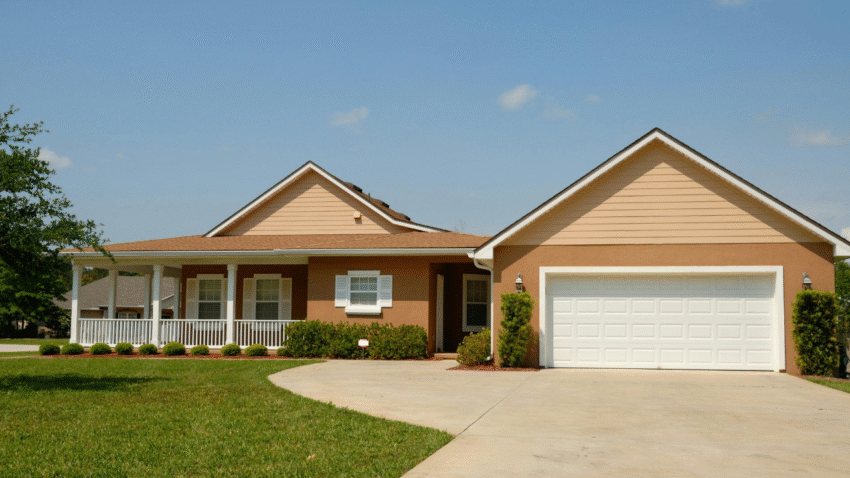Introduction
Your garage’s electrical system powers lighting, outlets, garage doors, tools, and sometimes even large appliances. When something goes wrong—whether it’s a flickering light, a dead outlet, or a tripped breaker—it can disrupt your work and create safety risks. Learning how to troubleshoot garage electrical problems can save you time, money, and frustration, while ensuring your garage remains safe and functional. This guide will walk you through common issues, step-by-step diagnostic methods, and safe solutions.
Common Electrical Problems in Garages
Before diving into troubleshooting, it helps to know the most frequent issues:
- Tripped Circuit Breakers – Caused by overloads or short circuits.
- Dead Outlets – Often linked to tripped GFCI outlets or wiring faults.
- Flickering or Dim Lights – May result from loose connections, old bulbs, or voltage drops.
- Non-Functioning Garage Door Opener – Sometimes an electrical supply issue rather than a mechanical fault.
- Burning Smell or Sparks – A serious warning sign of overheating wires or faulty devices.
Step-by-Step Troubleshooting Guide
1. Safety First
Electrical work can be dangerous. Before you start:
- Turn off the power at the circuit breaker for the affected area.
- Wear insulated gloves and use tools with rubber grips.
- Never work on live wires unless using proper testing equipment.
If you suspect a major problem (burning smell, smoke, melted wires), stop immediately and call a licensed electrician.
2. Identify the Problem Area
Start by narrowing down the problem:
- Is it just one outlet or light?
- Is the whole garage affected?
- Are other parts of the house having electrical issues?
Knowing the scope helps determine whether the issue is local (like a bad outlet) or more widespread (such as a breaker or panel issue).
3. Check the Circuit Breaker Panel
- Locate your home’s electrical panel and find the breaker controlling the garage.
- If the breaker is in the “off” position or in between “on” and “off,” reset it by turning it fully off, then back on.
- If it trips again immediately, there’s likely a short circuit, ground fault, or overload.
Tip: If your garage has heavy power demands (power tools, heaters, etc.), consider upgrading to a dedicated circuit to prevent frequent trips.
4. Test GFCI Outlets
Garages are often equipped with Ground Fault Circuit Interrupter (GFCI) outlets for safety. If your outlets stop working:
- Look for a GFCI outlet (usually has “reset” and “test” buttons) in the garage, basement, or nearby room.
- Press the “reset” button and check if power is restored.
- If pressing reset doesn’t work, the outlet may be faulty and need replacing.
5. Inspect for Visible Damage
Turn the power off and check:
- Outlets for scorch marks, cracks, or loose plugs.
- Light fixtures for burnt sockets or melted components.
- Extension cords or power strips for fraying or damage.
Replace damaged parts immediately to prevent fire hazards.
6. Test Outlets and Circuits with a Multimeter
A multimeter can help pinpoint problems:
- Set the multimeter to measure AC voltage.
- Insert the probes into the outlet slots; you should get a reading around 110–120 volts (in the US) or 220–240 volts (in many other countries).
- If you get no reading, there may be a break in the wiring or a tripped breaker upstream.
7. Isolate the Problem Device
Sometimes the issue isn’t your wiring—it’s a faulty appliance or tool.
- Unplug all devices from the garage outlets.
- Reset the breaker or GFCI outlet.
- Plug items back in one at a time until the breaker trips again—this identifies the faulty device.
8. Check for Loose Wiring Connections
Loose wires cause intermittent problems like flickering lights or outlets that work sporadically.
- Turn off the power.
- Remove outlet or switch covers and gently check that wires are secure under screws or in wire connectors.
- Tighten or replace connections as needed.
9. Look for Signs of Moisture Intrusion
Garages can be damp environments, and water is a major electrical hazard.
- Inspect for leaks near wiring, outlets, and light fixtures.
- Install weatherproof covers on outlets if the garage is exposed to moisture.
- If moisture damage is found, replace affected components immediately.
Common Solutions to Garage Electrical Issues
- Replace Faulty Outlets or Switches
- Use outlets rated for garage use (tamper-resistant, GFCI, or weather-resistant if necessary).
- Upgrade Circuit Capacity
- If you frequently trip breakers when using multiple tools, adding a dedicated 20-amp circuit can help.
- Install Additional Outlets
- Reduces overloads caused by too many devices on one outlet.
- Replace Old Wiring
- Outdated wiring may not handle modern power demands and can be a fire risk.
- Improve Lighting Wiring
- If flickering lights are common, upgrading to LED fixtures with proper wiring connections can solve the issue.
When to Call a Professional
While you can handle minor fixes, you should hire a licensed electrician if:
- Breakers trip repeatedly for no clear reason.
- You smell burning or see smoke.
- Wiring looks frayed, brittle, or melted.
- You need new circuits or panel upgrades.
- You lack the tools or experience to troubleshoot safely.
Preventing Future Electrical Problems in Your Garage
- Don’t Overload Circuits: Spread out power-hungry devices.
- Use Surge Protectors: Protect electronics and garage door openers.
- Schedule Periodic Inspections: Have an electrician check your wiring every few years.
- Label Your Breaker Panel: Makes troubleshooting faster and safer.
- Keep Moisture Out: Seal gaps, repair leaks, and use weatherproof covers.
Conclusion
Troubleshooting garage electrical problems involves a systematic approach: starting with safety, narrowing down the source, and applying the right fix. While many issues can be solved with simple resets or replacements, don’t hesitate to call a professional when the problem is beyond your skill level. A well-maintained electrical system not only makes your garage more functional but also ensures your safety and protects your property from costly damage.
